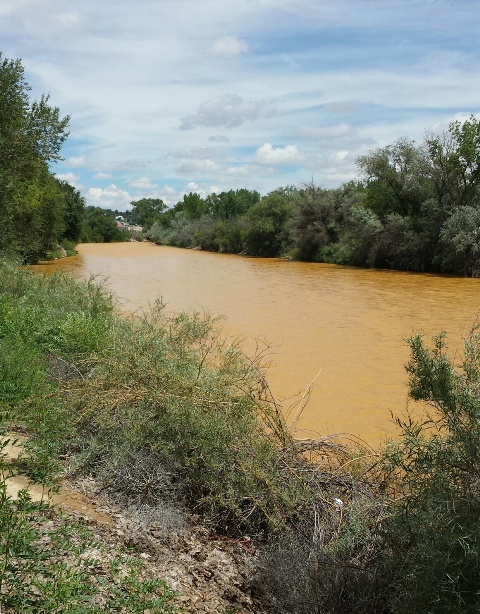The extractive industries have been a critical part of the Colorado economy for more than 150 years. The sector has been responsible for high-paying jobs in rural areas that have in turn stimulated growth in other sectors. In addition, the fuel, minerals, and metals have been utilized in ways that have improved our quality of life and made the United States a leader in innovation.
In 2014, the estimated value of the state’s extractive industries was projected to be $17.2 billion, broken down as follows:
• $7.0 billion – natural gas
• $6.7 billion – crude oil
• $2.2 billion – minerals
• $0.9 billion – coal
• $0.4 billion – carbon dioxide.
Despite its importance, the extractive industries have faced significant challenges.
“The Event”
For many years, the extractive industries were allowed to focus almost exclusively on extraction. Without regulation, pressure from industry members, or outside groups, insufficient attention has been paid to the impact of the extraction process.
This was evident when waste from Gold King Mine, near Silverton, recently spilled into Cement Creek. The plume of dirty, yellow water slowly made its way into the Animas River, which flows through Durango, Colorado and Farmington, New Mexico on its way to Lake Powell.
“The event” included a spill that contained a variety of pollutants and it was reported to be similar in volume to six Olympic- sized swimming pools. Within a week, the plume had passed through New Mexico. In Durango the pollutants either settled to the bottom of the river or the volume in the Animas River was great enough to dilute them or push them downstream. As a result, water tests indicated the concentration of pollutants had returned to acceptable pre-event levels – whatever that means.
The reaction to “the event” has been varied:
• Some think it is a disaster, catastrophe, and travesty.
• Initially, some were concerned because of the damage to the environment. As soon as the governor drank from the river, they rearranged their priorities and became concerned about the damage to local rafting companies and tourism businesses.
• Others have taken a wait and see attitude. They have asked, “What is the long-term damage?”
• There are a group of people who are focused on they blame game. They want to blame the mining industry, political parties, special interest groups, and government for “the event”. Others have gone so far as to speculate that “the event” was planned as a part of a conspiracy between the government and mining companies.
• From a historical perspective, “the event” is old news. For decades there have been pollutants in the Animas River as a result of runoff (Mother Nature) and leakage from mines. It wasn’t that long ago that the Smelter Mountain Mill, located in the south end of Durango, produced uranium for the Manhattan project.
Colorado Geological Survey
The website of the Colorado Geological Survey addresses the challenges they face in overseeing the industry.
“Prior to 1977 there were virtually no laws in the United States requiring that mines be reclaimed when mining was completed. Today the Colorado Division of Reclamation Mining and Safety is responsible for assuring that mined lands are restored under the Colorado Mined Land Reclamation Act and the Colorado Land Reclamation Act for the Extraction of Construction Materials. However, prior to those laws, when mining was completed, the companies just walked away leaving piles of waste and dug out holes. Thus, Colorado was left with an estimated 23,000 abandoned mine lands (AML).
Abandoned mines present very dangerous physical hazards to the public. High priority physical hazards identified by the Colorado Geological Survey for the USFS AML inventory are being jointly mitigated by the USFS and the Colorado Division of Reclamation, Mining, and Safety (DRMS). Mine workings are notorious for containing “bad air” including carbon monoxide, carbon dioxide, and hydrogen sulfide. These gases can kill unwary explorers of these old mines by asphyxiation. The old workings and structures can be very unstable and collapse without warning. Dangerous sites close to public access are being safeguarded through filling, capping, or gating the abandoned mine openings with engineered structures.”
Addressing the Challenges
Many in the state and the Four Corners areas will focus on the perspectives mentioned above. The verbiage from the Colorado Geological Survey shows this is not a simple problem, with a simple solution.
Colorado’s extractive industries are critical to the state’s economy and to the security and innovative leadership of the United States. Oil and coal are the backbone of the country’s transportation and utilities system. Rare and heavy metals are essential for the aerospace, biosciences, renewable energy, health care, transportation, defense, and environmental industries.
It is necessary for the country, including Colorado, to continue to drill for oil and gas and extract minerals and metals from the earth. Since 1977, government agencies and companies have been held to stricter standards for monitoring the impact of the extraction process. As has been recently demonstrated in Silverton, the efforts to monitor and manage pollutants are not perfect. The important point is that efforts are being made and they will be improved after “the event.”
With good fortune and sufficient funding, the state will remain diligent in its efforts to deal with the 23,000 abandoned mines.
Good luck to the local, state, and federal officials, agencies, companies, and special interest groups who will address the challenges facing the extractive industries in the years ahead.
